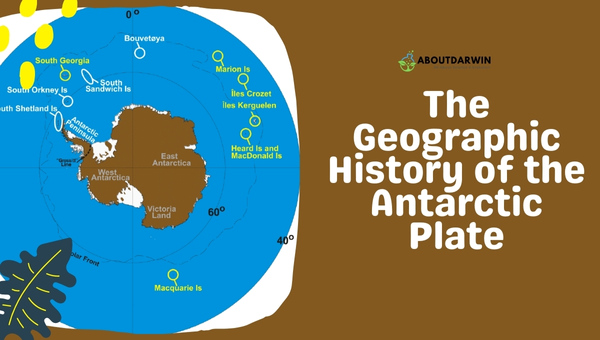Physical Address
304 North Cardinal St.
Dorchester Center, MA 02124
Regarding Earth’s fascinating geological features, Antarctica has a story to tell. Not only is it the southernmost continent on our planet, but it’s also a massive drifting landmass known as the Antarctic Plate. At the heart of this phenomenon is the constant movement of tectonic plates, which helps us understand the ever-changing landscape of the Earth.
Though covered in ice and snow, Antarctica’s geological makeup is surprisingly complex. It’s atop the Antarctic Plate, one of the seven principal tectonic plates that make up Earth’s lithosphere.
Despite the continent’s freezing temperatures and harsh conditions, studying the movement and interactions of the Antarctic Plate can provide valuable insights into the geological history of our planet.
The Antarctic Plate’s slow and steady drift affects Antarctica, nearby islands, and seafloor features. Earthquakes, volcanic activity, and even the breakup of ice shelves are all linked to the various processes at work within this drifting continent. So, as the Antarctic Plate continues its journey, I’ll be keeping a watchful eye on its mysterious geological developments.
When thinking about the drifting continents, Antarctica’s story never fails to pique interest. Understanding the geographic history of the Antarctic Plate is essential to comprehend its global significance fully.

The Antarctic Plate comprises the whole of Antarctica and goes beneath the Southern Ocean. The Pacific, South American, African, Australian, and Indian plates border it. Antarctica used to be part of the Gondwana supercontinent around 550 million years ago. Over time, other continents gradually separated until Antarctica reached its current position.
The breakup of Gondwana played a crucial role in shaping the Earth’s landmass and oceanic composition. Some vital points in the breakup process include:
One of the most significant periods in Antarctic history was the Eocene-Oligocene boundary, which occurred around 34 million years ago. It marked the dawn of the modern Antarctic ice sheet, a defining feature of today’s continent.
During this period, there was a substantial drop in global temperatures, leading to the expansion of ice sheets and glaciers both on and around the continent.
Antarctica’s climate wasn’t always chilly and sterile. The fossils discovered on the continent show evidence of temperate rainforests and diverse wildlife. However, the formation of the Antarctic Circumpolar Current dramatically changed the continent’s climate.
Here are a few key moments:
The Antarctic Plate, although isolated today, continues to shift and evolve just like the other continents. Studying and understanding its history is essential to anticipate impacts on the global climate and predict future landmass changes. Its significance goes beyond mere geography and extends to our comprehension of Earth’s geological past and environmental future.
Three Types of Rocks That Make Up Our Earth’s Crust
Antarctica’s drifting continent and the Antarctic Plate have provided a fascinating insight into our planet’s geological history. The continent has undergone significant changes due to the movement of the Antarctic Plate, which has influenced global climatic conditions and impacted marine life. Here are a few key takeaways:
| Rank | Tectonic Plate Name | Area (square kilometers) |
|---|---|---|
| 1 | Pacific Plate | ~103 million |
| 2 | North American Plate | ~75 million |
| 3 | Eurasian Plate | ~67 million |
| 4 | African Plate | ~61 million |
| 5 | Antarctic Plate | ~20.3 million |
Through a deeper understanding of the Antarctic Plate, I’ve appreciated the complexities governing Earth’s geology.
We must continue researching and documenting these critical geological processes as they contribute to our knowledge of Earth’s constant evolution, climate change, and biodiversity.
By doing so, we can better prepare ourselves for unforeseen impacts and make informed decisions about our planet’s future.